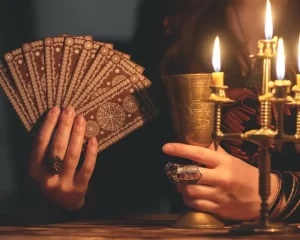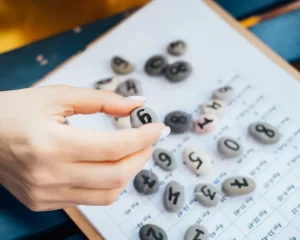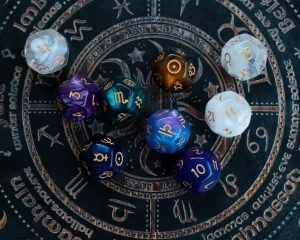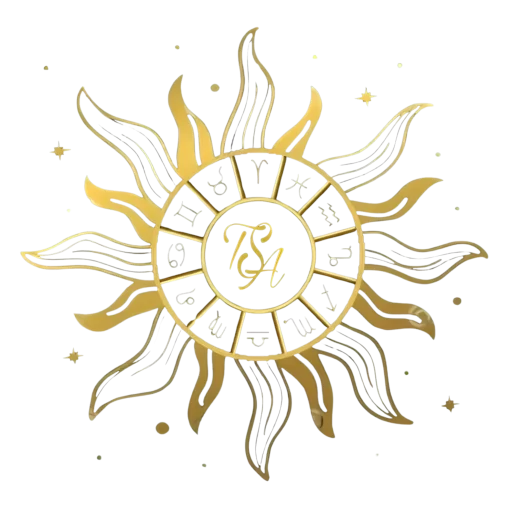
- +91-9728101465
- erpankajsugandha@gmail.com
Unlock the Secrets of Your Stars, Illuminate Your Path
Unlock the Secrets of Your Stars, Illuminate Your Path
Gemology: The Fascinating Science of Precious Stones
Gemology is the scientific study of gemstones, a field that blends the precision of science with the allure of natural beauty. From shimmering diamonds to vibrant rubies, the world of gemstones is as rich in history as it is in brilliance. Gemology not only involves identifying and grading precious stones but also understanding their origins, composition, and significance—both geological and cultural.
Whether you’re a collector, jeweler, astrologer, or simply a lover of beautiful things, gemology opens up a world where science, art, and history come together. In this article, we’ll explore what gemology is, its significance, types of gemstones, how gemologists work, and the spiritual and cultural aspects that make gemstones more than just decorative pieces.
What Is Gemology?
Gemology is a branch of mineralogy that focuses on the study of natural and synthetic gemstones. A certified gemologist is trained to identify, classify, and evaluate the quality and value of gemstones. While it may seem like a field only for scientists and jewelers, gemology also holds a key role in astrology, spirituality, fashion, and heritage.
Gemology covers a broad spectrum of topics, including:
- The physical and chemical properties of gemstones
- Methods for cutting and polishing stones (lapidary arts)
- The use of advanced tools to identify synthetic or treated stones
- Grading the quality of gems based on color, clarity, cut, and carat (commonly known as the 4 Cs)
History and Cultural Significance of Gemstones
Gemstones have captivated human beings for thousands of years. In ancient civilizations such as Egypt, India, China, and Mesopotamia, gems were considered symbols of power, protection, and divine connection. Pharaohs were buried with turquoise and lapis lazuli, while Indian kings adorned themselves with sapphires and emeralds believed to bring luck and strength.
In Vedic astrology, gemstones are used to balance planetary energies and bring harmony to a person’s life. Each planet is associated with a specific gemstone, and wearing the right one is said to improve fortune, health, or relationships.
Types of Gemstones
Gemstones can be categorized into two primary types: precious and semi-precious. However, these terms are more historical than scientific, as even semi-precious stones can be rare and valuable.
✅ Precious Gemstones
- Diamond: Known for its unmatched hardness and brilliance. Associated with strength and eternal love.
- Ruby: A red variety of corundum, symbolizing passion, courage, and protection.
- Sapphire: Usually blue, but available in many colors. Represents wisdom, loyalty, and mental clarity.
- Emerald: A green gemstone linked to abundance, love, and healing.
✅ Semi-Precious Gemstones
- Amethyst: A purple quartz known for calming and spiritual protection.
- Citrine: A golden yellow quartz linked to prosperity and positivity.
- Garnet: A deep red gem associated with vitality and security.
- Aquamarine: A light blue gem symbolizing clarity, peace, and communication.
- Moonstone, Topaz, Peridot, Turquoise, and many others fall into this category.
Some rare gems like alexandrite, tanzanite, and opal defy categorization due to their unique characteristics and increasing value.
The 4 Cs of Gemstone Grading
Gemologists use the 4 Cs—Color, Clarity, Cut, and Carat—to evaluate the quality and value of gemstones, particularly diamonds.
👉 Color
- For colored gemstones, the intensity and purity of the color are key factors.
- For diamonds, the absence of color increases value (graded from D to Z).
👉 Clarity
- Refers to the presence of internal flaws (inclusions) or surface imperfections.
- Fewer inclusions usually mean higher value.
👉 Cut
- The quality of the cut affects how well a gemstone reflects light.
- It determines brilliance, symmetry, and sparkle.
👉 Carat
- The weight of the gemstone.
- One carat equals 200 milligrams. Larger gems are rarer and more valuable.
Gemstone Treatments and Synthetics
Not all gemstones are natural in their final form. Some undergo treatments to enhance their appearance, and others are entirely lab-created. Common treatments include:
- Heat treatment: Improves color and clarity (common in sapphires and rubies).
- Irradiation: Changes color (used for topaz and diamonds).
- Fracture filling: Fills cracks with glass or resin (used in emeralds).
Synthetic gemstones are created in laboratories but have the same physical and chemical properties as natural ones. They are not “fake” but are typically valued less due to their abundance and ease of production.
Gemologists use specialized equipment such as microscopes, spectrometers, and polariscopes to detect these treatments and distinguish between natural and synthetic stones.
Gemology and Astrology
In astrology, particularly Vedic astrology, gemstones are worn to attract beneficial planetary energies and counteract negative influences. This system, known as gemstone therapy, assigns specific gems to each of the nine planets:
- Ruby – Sun
- Pearl – Moon
- Red Coral – Mars
- Emerald – Mercury
- Yellow Sapphire – Jupiter
- Diamond – Venus
- Blue Sapphire – Saturn
- Hessonite – Rahu
- Cat’s Eye – Ketu
Wearing a gemstone aligned with a strong or weakened planet is believed to bring harmony and improvement in various aspects of life such as health, wealth, and relationships. However, it is always recommended to consult an expert astrologer before choosing a gemstone for astrological purposes.
Why Gemology Matters
Gemology is not just for professionals. Whether you’re purchasing jewelry, seeking astrological guidance, or simply interested in the natural world, knowing the basics of gemology can help you make informed decisions.
- Buyers can avoid fraud and ensure they’re paying the right price for genuine stones.
- Collectors can appreciate the rarity and beauty of different gems.
- Spiritual seekers can align their gemstone choices with energy healing or planetary balance.
Additionally, in today’s market where fake or treated gemstones are common, a basic understanding of gemology helps distinguish between a valuable investment and a decorative imitation.
Care and Maintenance of Gemstones
Different gemstones require different levels of care. Some are delicate and prone to scratching or fading, while others like diamonds and sapphires are extremely durable.
General tips:
- Clean with mild soap and a soft brush.
- Avoid ultrasonic cleaners for softer or treated gems.
- Store each gemstone separately to avoid scratching.
Regular cleaning and careful storage preserve the appearance and energy of your gemstones for years to come.
Conclusion: The Enduring Allure of Gemstones
Gemology reveals that gemstones are more than just beautiful objects—they are pieces of the Earth’s story, formed over millions of years under immense pressure and heat. Each stone has its own tale to tell—of formation, culture, energy, and expression.
Whether you wear gemstones for fashion, healing, or astrological purposes, understanding their essence brings a deeper connection and appreciation. Gemology invites us to see the extraordinary in the ordinary, the spiritual in the scientific, and the timeless beauty of nature in the palm of our hand.
Category
Recent Posts


Numerology: Unlock the Hidden Meaning of Numbers

Palmistry: Unlocking the Secrets of Your Hand

What Is Astrology? A Gateway to the Stars
Have A Question? Get In Touch.
Have questions about your destiny? We’re here to provide personalized astrological insights. Connect with Sunshine Astrology for guidance on horoscopes, zodiac signs, and cosmic energies. Let the stars lead the way—reach out to us today!
TSA offers expert astrology services including Kundli matching, Palmistry, Face Reading, and Gemology to guide you toward a prosperous and harmonious life.
Quick Links
Contact Info
- +91-9728101465
- connect@thesunshineastrology.com
- B24 Gali Gokal Chand Arya Ghoshiyan Chowk Halu Bazar Bhiwani, Haryana - 127021
